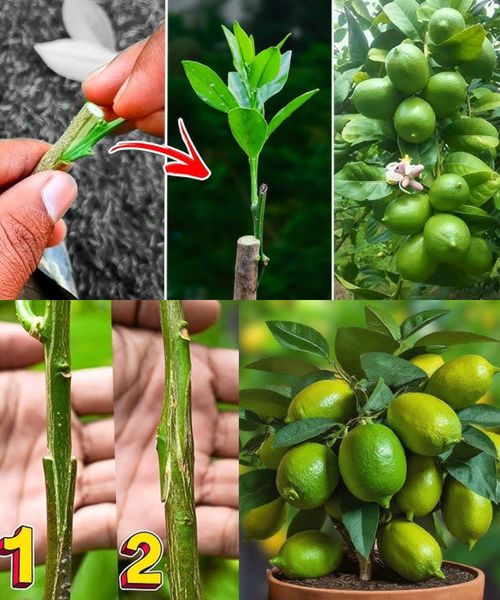Grafting is a widely used technique to propagate citrus trees, including lemons, and bud grafting is one of the simplest and most effective methods. This method involves attaching a bud from your desired lemon variety to a compatible rootstock. Here’s a step-by-step guide to help you successfully bud graft citrus trees.
Step 1: Gather the Right Materials
- Rootstock: Choose a healthy rootstock that is compatible with lemons, such as Trifoliate Orange or Swingle Citrumelo.
- Scion: Select a disease-free lemon tree for your scion. The scion should be from a mature, high-quality lemon variety.
- Tools: You will need a sharp knife, grafting tape or parafilm, and pruning shears. Sterilize your tools to prevent disease.
Step 2: Prepare the Rootstock
- Timing: Bud grafting is best done in spring or early summer when the rootstock is actively growing.
- Preparation: Select a young rootstock about ¼ to ½ inch in diameter. Clean the grafting area to ensure proper contact between the bud and rootstock.
Step 3: Collect the Buds
- Select Healthy Buds: Choose fully developed buds from the current season’s growth on the lemon tree. Make sure they are disease-free.
- Cutting the Bud: Use a sharp knife to carefully remove the bud along with a thin slice of bark from the scion.
Step 4: Perform the Bud Grafting
- Make the Incision: On the rootstock, create a T-shaped cut about 1-2 inches long. Gently lift the flaps of bark to expose the cambium layer underneath.
- Insert the Bud: Slide the bud into the T-shaped incision, ensuring direct contact between the bud and the cambium layer of the rootstock.
- Secure the Graft: Wrap the grafting tape or parafilm around the graft site, ensuring it’s tightly sealed to prevent drying out and infection.
Step 5: Care for the Grafted Tree
- Watering: Keep the soil moist around the rootstock to promote graft union, but avoid waterlogging.
- Monitoring: Regularly check the graft site for growth, ensuring the grafting tape isn’t constricting the bud’s development.
- Remove the Tape: After a few weeks, when you see new growth, remove the grafting tape or parafilm. Make sure the bud is well fused to the rootstock before doing so.
Step 6: Post-Grafting Care
- Pruning: Remove any competing shoots or suckers from the rootstock to focus energy on the new bud.
- Fertilizing: Use a balanced fertilizer suited for citrus to support the tree’s growth.
- Protection: Shield the grafted tree from harsh weather and pests to ensure healthy development.
Step 7: Final Steps
- Growth and Maturity: Be patient, as it may take several months to a year for the graft to mature and bear fruit.
- Patience: Grafting takes time and care, but the reward will be a thriving lemon tree that produces delicious fruit.
Conclusion
Bud grafting is an effective and simple way to propagate lemon trees and other citrus varieties. With the proper tools, technique, and aftercare, you’ll be able to grow a productive lemon tree from a single bud, bringing you a plentiful harvest of fresh lemons.

